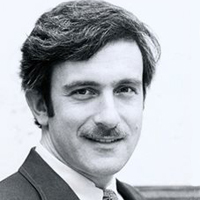Michael S. Feld Biophotonics Award
Get Involved
Michael S. Feld Biophotonics Award
The award was established in 2012 to honor Michael Feld for his fundamental contributions to applications of photonics technologies to solving biomedical problems.
Society Connection
Michael S. Feld was a Fellow and served the society on the CLEO Fundamental Science Program Committee, FiO Program Committee, and the Biomedical Topical Program Committee Meeting. In 2008 he received the William F. Meggers Award.
Key Funders
Massachusetts Institute of Technology (MIT), David Feld, Hamamatsu Photonics K.K., Coherent Inc.
About Michael S. Feld
 Feld made fundamental contributions in the field of laser science, and later applied physics to solving biomedical problems. He made the first experimental observation of superradiance and later researched the biomedical applications of lasers. Feld started his journey at MIT in 1958 as an undergraduate. He went on to do his PhD at MIT under the supervision of Professor Ali Javan, and in 1968 he became a member of the MIT faculty. During his 52 years at MIT he was an active contributor to the Institute community; he was particularly proud of his work helping to develop a welcoming ambience for minority students, staff and faculty.
Feld made fundamental contributions in the field of laser science, and later applied physics to solving biomedical problems. He made the first experimental observation of superradiance and later researched the biomedical applications of lasers. Feld started his journey at MIT in 1958 as an undergraduate. He went on to do his PhD at MIT under the supervision of Professor Ali Javan, and in 1968 he became a member of the MIT faculty. During his 52 years at MIT he was an active contributor to the Institute community; he was particularly proud of his work helping to develop a welcoming ambience for minority students, staff and faculty.
Feld's research interests ranged from fundamental physics — superradiance and innovations in laser spectroscopy — to biomedicine and biomedical engineering, new kinds of microscopy, spectroscopic identification of cancer cells, and novel uses of the electric field to study cell behavior. In 1973, Feld made the first experimental observation of superradiance, the collective spontaneous emission of an assembly of excited atoms. In 1987, he began a series of experiments to study the radiation of a single, isolated atom in an optical resonator, which led to the first demonstration of enhanced and suppressed spontaneous emission and radiative level shifts in an open optical resonator and, in 1994, to the development of the single atom laser.
His more recent research activities dealt with laser biomedicine. He directed the Laser Biomedical Research Center at MIT, where he worked on the use of fluorescence and Raman spectroscopy to diagnose biological tissues and image disease via endoscopy and optical tomography. He was a research member of the joint faculty of the Harvard-MIT Division of Health, Science and Technology, and an adjunct staff member in the Department of Cardiovascular Research of the Cleveland Clinic Foundation.
Feld supervised more than 50 PhD students during his career and continued going into the lab and working with his graduate students as he was in and out of the hospital shortly before his death. He also enjoyed singing and started a group called the Spectratones, which performed at Spectroscopy Lab events. Many of the group’s songs were based on poems that Feld composed about his students and colleagues.
Feld received the Thompson Award in 1991 for the development of biomedical Raman spectroscopy, and the Vinci of Excellence (France) in 1995 for development of the single atom laser. In 1992, he was the Wolk Visitor and Lecturer at Colgate University. He was 1996 Distinguished Baetjer Colloquium speaker at Princeton University. In 2003, he received the Lamb Medal of the Physics of Quantum Electronics Conference for the first experimental demonstrations of superradiance and the microlaser and for pioneering applications of optics to biological physics. In 2008, he received the prestigious William F. Meggers Award in recognition of his major contributions to the foundations of laser spectroscopy and his pioneering developments in the application of spectroscopy to biomedicine.
